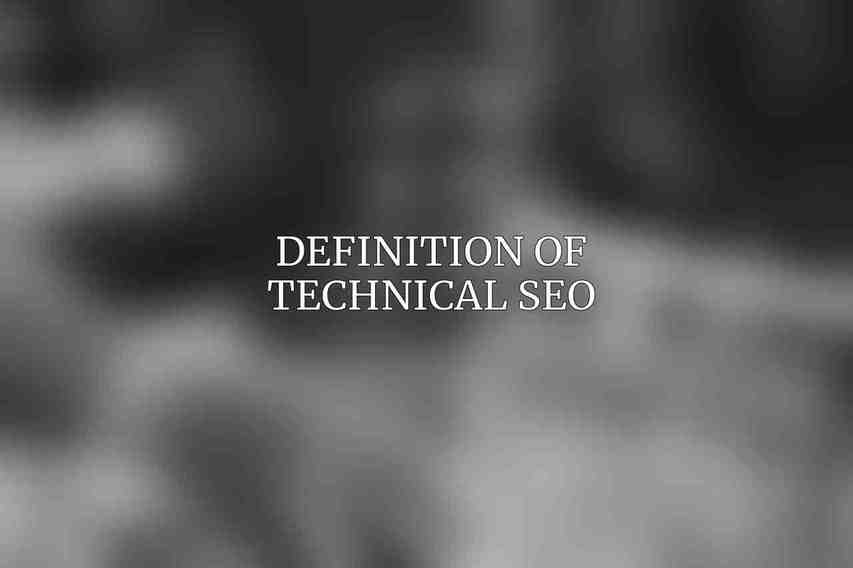the success of a Shopify store often hinges on its visibility to potential customers. Technical SEO, a crucial aspect of search engine optimization, plays a vital role in ensuring that Shopify stores are not only discovered by search engines but also ranked prominently in search results. This guide will delve into the intricacies of mastering technical SEO specifically tailored for Shopify stores.
Definition of Technical SEO

Technical SEO refers to the optimization of a website’s technical elements to improve its search engine visibility and rankings. It focuses on factors such as site speed, mobile-friendliness, site structure, and indexing, all of which contribute to a website’s overall performance on search engines.
Significance of Technical SEO for Shopify Stores

For Shopify stores, technical SEO is the foundation of a successful online presence. Without proper technical optimization, even the most compelling products and content may struggle to reach the intended audience. From enhancing user experience to boosting search engine rankings, technical SEO on Shopify is indispensable for driving organic traffic and ultimately increasing conversions.
Site Structure and Architecture
The site structure of a Shopify store serves as the blueprint for navigation, content organization, and user experience. A well-structured site not only makes it easier for visitors to find what they are looking for but also helps search engines crawl and index the site more effectively.
Importance of a Well-Structured Site
An organized site structure enhances user experience by simplifying navigation and ensuring that visitors can easily find the information they seek. From a technical SEO perspective, a clear site structure helps search engines understand the relationships between different pages and prioritize relevant content for indexing.
Optimizing URL Structure for SEO
URLs play a crucial role in both user experience and SEO. Optimizing URL structure involves creating descriptive, keyword-rich URLs that are readable to both users and search engines. A clear URL structure not only boosts SEO but also improves click-through rates and enhances the overall user experience.
Creating Effective Navigation Menus
Navigation menus are the roadmap that guides visitors through a Shopify store. By creating effective navigation menus, store owners can ensure that visitors can easily discover and access different sections of the site. Clear, intuitive navigation menus not only improve user experience but also help distribute link equity throughout the site.
Utilizing Breadcrumbs for Improved User Experience
Breadcrumbs are navigational aids that show users the hierarchical structure of a website and the path they have taken to arrive at a particular page. By utilizing breadcrumbs in a Shopify store, store owners can enhance user experience, improve site navigation, and provide search engines with additional context about the relationships between different pages.
Mobile Optimization
With the increasing number of users accessing the internet via mobile devices, mobile optimization is no longer optional but essential for Shopify stores to succeed in search engine rankings and user experience.
Mobile-First Indexing and Its Implications
Google’s mobile-first indexing prioritizes the mobile version of a website over the desktop version when determining search engine rankings. Shopify store owners must ensure that their sites are mobile-friendly to avoid any negative impact on their SEO performance.
Ensuring Responsive Design for Various Screen Sizes
Responsive design ensures that a website displays correctly and functions seamlessly across different devices and screen sizes. By ensuring responsive design for their Shopify stores, owners can provide a consistent user experience, improve SEO performance, and cater to the needs of mobile users effectively.
Implementing Accelerated Mobile Pages (AMP) for Faster Mobile Page Loading
AMP (Accelerated Mobile Pages) is an open-source initiative designed to create mobile-optimized content that loads instantly on mobile devices. By implementing AMP on key pages of a Shopify store, store owners can significantly improve mobile page loading speed, decrease bounce rates, and enhance user engagement on mobile devices.
Stay tuned for the continuation of this comprehensive guide!
Frequently Asked Questions
What is Technical SEO?
Technical SEO involves optimizing the technical aspects of a website to improve its search engine visibility and ranking.
Why is Technical SEO important for Shopify websites?
Technical SEO ensures that your Shopify site is structured in a way that search engines can easily crawl and understand its content, leading to better rankings and increased organic traffic.
What are some common technical SEO issues on Shopify?
Common technical SEO issues on Shopify include slow page loading speed, improper URL structure, duplicate content, missing meta tags, and issues with mobile responsiveness.
How can I perform a technical SEO audit on my Shopify website?
To perform a technical SEO audit on your Shopify website, you can use tools like Google Search Console, Shopify SEO apps, and online SEO auditing tools to identify and fix any technical issues. Explore further with Ultimate Shopify SEO Checklist for Higher Rankings
What are some best practices for mastering technical SEO on Shopify?
Some best practices for mastering technical SEO on Shopify include optimizing page loading speed, creating SEO-friendly URLs, fixing broken links, optimizing images, implementing structured data, and ensuring mobile responsiveness.

